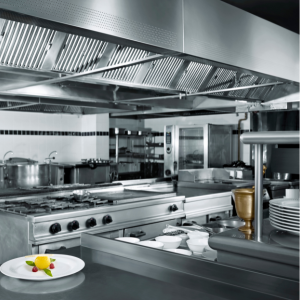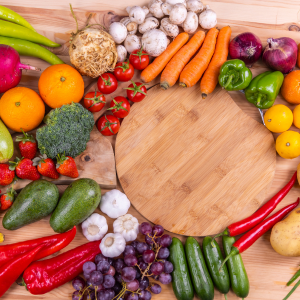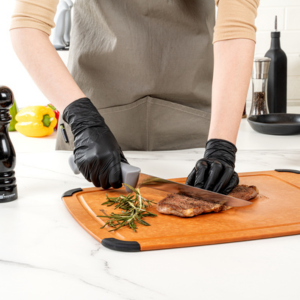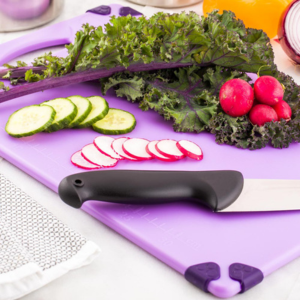Color-coding your commercial kitchen is perhaps the most effective and efficient way to keep things organized, maintain safety standards, and enhance operational efficiency. It is employed by numerous restaurants, hotels, and food processing facilities worldwide for its many benefits. So, if you're wondering why you should color-code your kitchen, you've come to the right place.

What Are The Color Coding Standards In The Food Industry?
To appreciate why color-coding is essential, learning about the predominant color-coding standards in the food industry is pivotal. This system aims to distinctly separate the use of utensils and kitchen gear according to different food types, which are identified by particular colors.

- Blue: Adopted for raw fish, mainly because the blue appears conspicuous against the fish's flesh, a handy tool in preventing pieces of the colored object from ending up in the dish undetected.
- Red: Designated for raw meats like pork, lamb, and beef, it facilitates the separation of raw red meat from other food types, reducing cross-contamination risks.
- Yellow: Assigned for cooked meats; this division aids in warding off bacterial shift from raw to cooked meats, which could lead to foodborne diseases.
- Green: Fruits and vegetables neatly align with green, an intuitive correlative color of the plant kingdom.
- Brown: Utilized for root vegetables such as potatoes, yams, and onions.
- White: Primarily used for dairy, bakery products, and generic food processing tasks.
- Purple: A color reserved for allergen-free production, beneficial in preventing allergenic cross-contamination.
By having a standardized color guide, the kitchen team can avoid confusion and better adhere to quality and safety protocols in food handling.
Why Is Color Coding So Important?

Color coding in a commercial kitchen is crucial for several reasons:
Ensures Sanitation and Food Safety
Color coding plays a crucial role in minimizing the risk of cross-contamination between different food types or between raw and cooked items. For instance, designating a green board for raw vegetables and a yellow one for cooked poultry helps prevent any bacteria from the vegetables from contaminating the cooked poultry. By adopting a color-coded system in your kitchen, you can ensure a clean and safe environment, ultimately protecting your customers from foodborne illnesses.
Boosts Operational Efficiency
In a fast-paced kitchen environment, streamlining efficiency is critical for delivering exceptional service. Color coding not only enhances the organization but also substantially reduces time wastage by eliminating unnecessary guesswork. When every item has a designated color, kitchen staff can quickly identify, use, and return them to their proper places, thereby accelerating the operational workflow and promoting productivity.
Meets Hygiene Regulations
A color-coded kitchen goes beyond aesthetics and organization — it demonstrates your professional commitment to maintaining international food safety standards. By also incorporating color coding for HACCP (Hazard Analysis Critical Control Point) inspections, your kitchen visibly displays a thorough understanding and adherence to food hygiene regulations. This system helps your establishment stay compliant with health and safety requirements, ultimately becoming a standout factor during health inspection audits and garnering trust from customers and inspectors alike.
Which Products In My Kitchen Should Be Color Coded?
Ideally, you would want any object that frequently contacts food to be color-coded. Here are some utensils you may consider:

- Chopping Boards: Known to be hotspots in cross-contamination, assigning unique boards for each food group ensures minimal bacterial transfer.
- Knives: Using the same tool to cut different types of food in a sequence without proper cleaning is a common precursor for contamination. Thus, using separate knives for different foods or tasks is recommended.
- Serving Tools: These utensils usually have high contact frequency with various food types; hence, spatulas and tongs, as well as tweezers, should be color-coded to maintain clean usage.
- Storage Containers: Using color-coded holders for food storage assists in quick, efficient identification, further simplifying inventory management.
- Thermometers: Managing cooking temperature is essential in preventing foodborne illnesses. Therefore, having thermometers dedicated to specific food types helps keep the food preparation process sanitary.
- Labels: By using color-coded labels on all containers, utensils, and equipment, kitchen staff can quickly identify which equipment belongs to specific food groups, minimizing cross-contamination risks.
- Cleaning Tools: Even cleaning tools require color-coding to avoid spreading bacteria between differing sectors of the kitchen.
The Convenience And Value Of Color Coding In Cleaning
A color-coded cleaning routine can work wonders in maintaining a sanitary and spotless kitchen. For everyday use, color-coding cleaning tools and products can prevent contamination between surfaces. The Food Safety and Inspection Service (FSIS) has recommended that different cleaning equipment be used in different areas to keep surfaces sanitary. For example, a kitchen staff equipped with the knowledge that a red mop is for the bathroom floor, a blue brush for the dining area, and a green cloth for kitchen surfaces are less likely to interchange tools, preventing the spread of harmful bacteria from one area to another.
Paint Your Kitchen With Success!
Color-coding your kitchen is like cooking a great meal; it demands careful planning and execution, but when done right, the results are impressively gratifying. This system not only helps in preventing food contamination but also improves the overall efficiency of your kitchen operations. It’s easy to implement and train employees, and it offers a sleek, organized look that is certain to impress health inspectors and staff alike. Kickstart your color-coding kitchen journey today and see first-hand the transformation it brings to the table!






